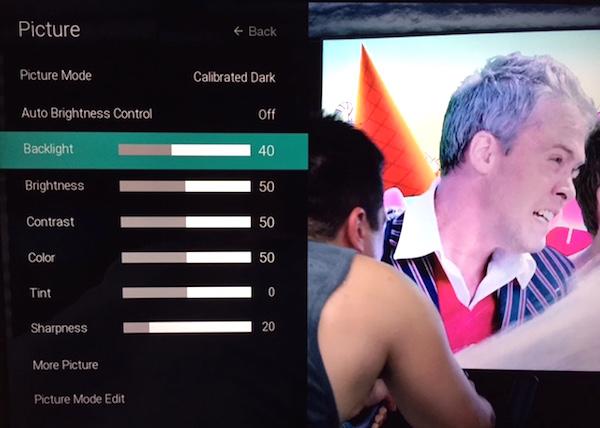What Does a TV’s Backlight Control Do?

Q I am trying to find a TV with low light intensity since my eyes are extremely sensitive to light. I have been told that an LCD TV with a full array LED backlight will let me dim the screen’s intensity without compromising picture quality. Is this true? If so, how does that work? —Patrick Forte
A Many LCD TVs, including full array and edge-lit local dimming models, provide a backlight control to tailor light output for the environment the set is installed in. For example, if you are watching in a bright room with overhead lights, you would increase the level of the backlight control to maximize light output. When viewing in a dim or dark room, you would lower the backlight to a level that permits comfortable viewing without eyestrain.
Note that the backlight control on LCD TVs is different from the brightness control — an adjustment it’s often confused with. While the backlight control adjusts the overall output of the LED array that makes up the set’s backlight, the brightness control is used to adjust black level, or how dark the dark areas of the picture appear onscreen. The set’s contrast control, on the other hand, is used to adjust the intensity of the lightest areas of the picture, or the highlights.
So to answer your main question, yes, a TV’s backlight control can dim the screen’s intensity without compromising picture quality. For that to happen, however, the set’s brightness and contrast controls also need to be adjusted to ensure they're displaying the full level of detail in shadows and highlights. While some viewers choose to do this by eye, adjusting a TV’s controls with any level of accuracy requires a video setup disc like the Spears & Munsil HD Benchmark, which contains specific calibration patterns for brightness and contrast.
One suggestion: Since you’re shopping for a new TV and have light sensitivity issues, I’d look into an OLED model. Many new LCD Ultra HDTVs are equipped with powerful backlights to deliver the high contrast necessary for displaying high dynamic range (HDR) movies and TV shows. While OLED models also display HDR, they achieve high contrast not through intense brightness peaks, but through ultra-low black levels, which are a native characteristic of the technology.
- Log in or register to post comments





























































